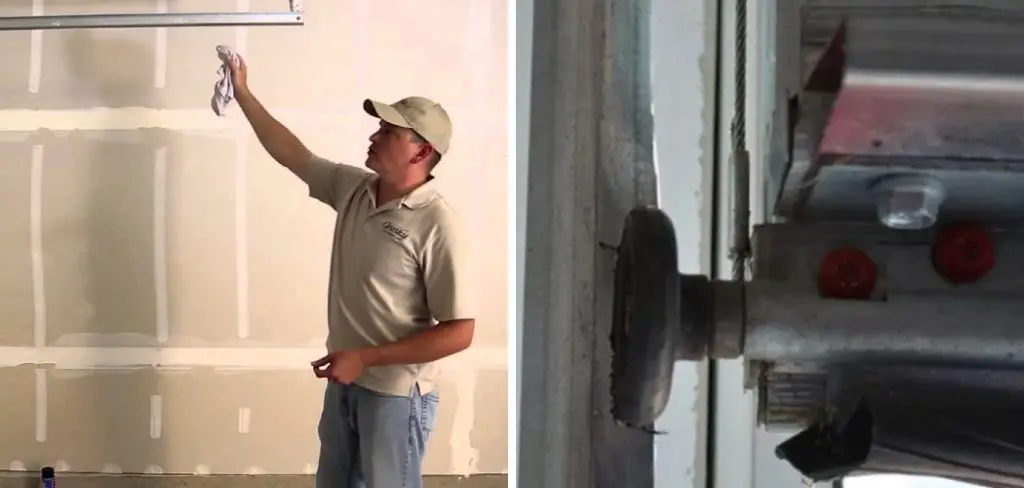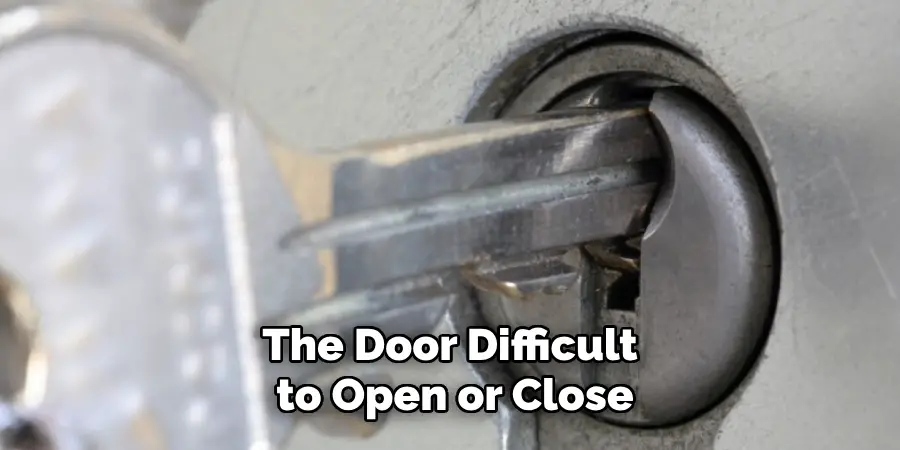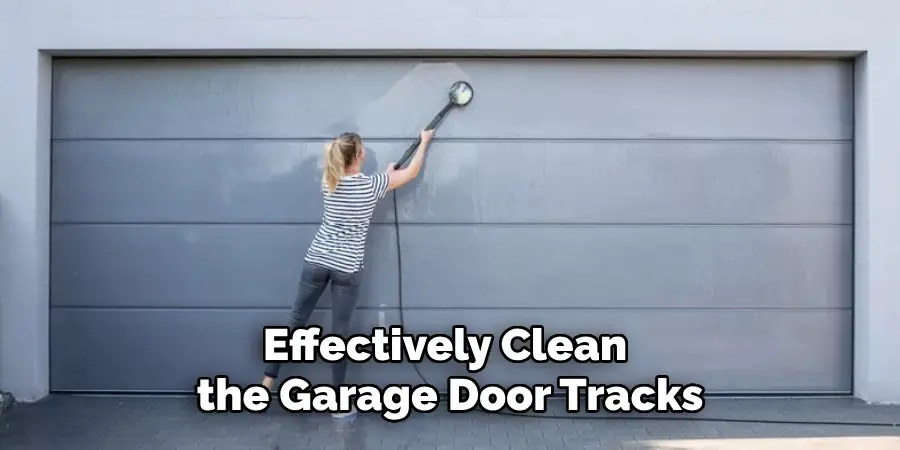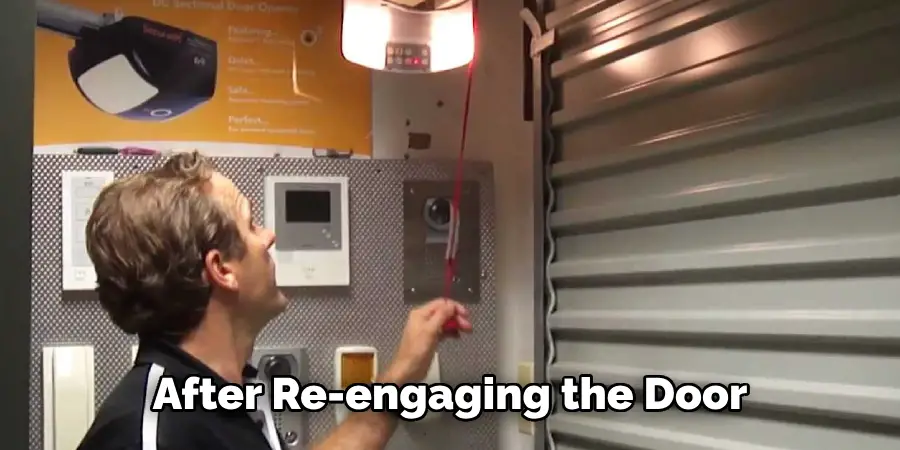Keeping your garage door tracks clean is essential for ensuring smooth operation and longevity of the door itself. Regular maintenance helps to prevent the accumulation of dirt, debris, and grime, leading to various issues such as noisy operation, resistance when opening or closing, and uneven movement. Ignoring this critical aspect of garage door upkeep can not only

result in inconveniences but may also cause premature wear and tear on components and mechanisms. In this article, we will provide a comprehensive guide on how to clean garage door tracks effectively. The process will include gathering necessary supplies, preparing the cleaning area, properly scrubbing the tracks, lubricating them after cleaning, and finally, testing the door to
ensure it operates smoothly. Following these steps will help you maintain your garage door’s functionality and avoid costly repairs in the future.
Understanding Garage Door Tracks and Common Issues
Role of Garage Door Tracks
Garage door tracks play a crucial role in the entire system’s functionality, serving as the guides that ensure the rollers move smoothly during the opening and closing process. These tracks are typically made of durable metal and are designed to accommodate the wheels of the garage door, allowing it to travel vertically and horizontally without resistance. When tracks are clean
and well-maintained, they significantly enhance the overall performance of the garage door, ensuring that it operates quietly and efficiently. Proper alignment of the tracks is also essential, as even slight deviations can lead to complications in the door’s movement. Regular maintenance of tracks prevents the buildup of dirt and debris that could compromise their integrity,
thereby extending the garage door’s lifespan and minimizing the need for costly repairs.
Common Problems Caused by Dirty Tracks
When garage door tracks become dirty or clogged, a variety of issues can arise that impede their performance. One of the most common problems is misalignment, where the door fails to follow the tracks properly, leading to uneven movement or potential derailment. Additionally, the accumulation of dirt and grime can cause the rollers to stick or jam, creating loud noises during
operation and making the door difficult to open or close. These disruptions can not only be frustrating, but they can also pose safety hazards if the door becomes stuck while in motion. Regular cleaning of the tracks is essential to prevent these problems from occurring, ensuring a smooth, quiet, and reliable operation of the garage door. By incorporating routine maintenance into your

garage care schedule, you can safeguard against the adverse effects of dirty tracks and maintain optimal door performance.
Gathering Necessary Supplies and Tools
Before you begin cleaning your garage door tracks, it’s important to gather all the necessary supplies and tools to ensure an efficient process. Below is a list of supplies you’ll need:
List of Supplies
- Vacuum cleaner
- Stiff-bristle brush
- Microfiber cloths
- Warm soapy water
- Spray bottle
- Step ladder
- Optional: Degreaser or all-purpose cleaner for stubborn grime
Safety Precautions
Proper safety precautions are crucial when working on your garage door. Always disconnect the garage door opener to avoid accidental activation. Wear gloves and safety glasses to protect yourself from dirt, debris, and cleaning chemicals. Additionally, ensure that the garage door is securely supported during cleaning, especially if you’re working on tracks that may cause the door
to shift unexpectedly. Following these precautions will help keep you safe throughout the maintenance process.
Preparing the Garage Door Tracks for Cleaning
Before cleaning, it’s crucial to prepare the garage door tracks adequately. Proper preparation ensures that the cleaning is effective and safe, helping to prolong the life of your garage door system. The first step involves disconnecting the garage door opener to prevent accidental operation while you clean. Next, you’ll want to remove any loose debris that may have accumulated in the tracks. Both of these steps are essential for a thorough and hassle-free cleaning experience.

Disconnecting the Door and Securing It
To begin, locate the emergency release cord on your garage door opener, usually a red cord hanging from the opener’s pulley system. Pulling this cord will disengage the door from the opener, allowing you to operate it manually. After disconnecting, securing the door is important to prevent it from moving unexpectedly while you work. Use clamps or locking pliers on the track just
below the rollers to hold the door in place firmly. This will keep the door stationary and ensure your safety as you clean. Remember to check for any loose parts or potential hazards in the vicinity before proceeding with the cleaning.
Removing Loose Debris
With the door secured, it’s time to clear away loose debris. Start using a vacuum cleaner equipped with an appropriate nozzle to effectively remove dirt, dust, and other loose particles from the tracks. It’s important to focus on this step first, as doing so will make the subsequent cleaning easier and more effective. By eliminating the bulk of loose debris, you reduce the risk of
scratching the surfaces of the tracks while scrubbing them. Once you have thoroughly vacuumed the tracks, you’ll be well-prepared to move on to the next cleaning steps with confidence.
How to Clean Garage Door Tracks: Cleaning the Garage Door Tracks
Cleaning your garage door tracks is essential to maintenance to ensure smooth and reliable operation. Below are detailed instructions on how to wash the tracks with soapy water, deal with stubborn grime, and properly dry the tracks afterward.
Washing the Tracks with Soapy Water
To effectively clean the garage door tracks, start by preparing a solution of warm, soapy water using a mild detergent. Dampen a microfiber cloth or sponge in the soapy water, ensuring it is not overly saturated. Begin cleaning by wiping the tracks, focusing on the corners and edges where dirt and grime tend to accumulate. Use firm and consistent pressure to scrub away any built-

up debris moving along the entire length of the track. Pay special attention to areas near the rollers, as these are prone to the most accumulation. Work in sections, rinsing the cloth often to prevent redistributing the dirt. Once you’ve cleaned the entire track, use a clean, damp cloth to wipe away any soap residue, ensuring a thorough clean before moving on to the next steps.
Dealing with Stubborn Grime
When dirt and grease have hardened into stubborn grime, a degreaser or all-purpose cleaner may be necessary. Choose a cleaner formulated for heavy-duty cleaning and apply it directly to the affected areas of the tracks. Allow the cleaner to sit for a few minutes, as this will help to break down the grime and make scrubbing easier. After a brief waiting period, use a stiff-bristle brush to
scrub the grime, focusing on tough spots that may require extra attention. Be sure to follow the manufacturer’s instructions for the cleaner being used, as different products may have specific application guidelines. Once you have scrubbed away the stubborn residue, wipe the tracks with a clean cloth to remove any leftover cleaner and debris.
Drying the Tracks
After cleaning the tracks thoroughly, it is crucial to dry them properly to prevent rust and corrosion. Using a clean, dry cloth, thoroughly wipe down the tracks, ensuring that all moisture is removed from both the metal surfaces and the grooves. Pay special attention to areas where water may pool or linger, as these areas could become vulnerable to rust if not dried adequately. Allowing
some air circulation around the tracks is beneficial for additional drying. Ensuring all moisture is eliminated not only prolongs the life of the tracks but also prepares them for lubrication—a critical step in maintaining smooth operation. Following these drying steps, you can safeguard your garage door system against potential damage and maintain its efficient performance.
Lubricating the Tracks
Proper lubrication of garage door tracks is crucial for ensuring smooth operation and extending the lifespan of your garage door system. By applying the right lubricant, you minimize wear and tear on the moving parts, which can help prevent future costly repairs and maintain optimal performance.
Choosing the Right Lubricant
When selecting a lubricant, choosing a silicone-based spray specifically designed for garage door tracks is essential. Unlike grease or oil, silicone lubricants do not attract dirt and debris, which can lead to more significant issues over time. Using the correct lubricant helps to reduce friction and wear, ensuring that your garage door operates efficiently without accumulating harmful residues.

Applying Lubricant to the Tracks
To apply the lubricant, spray a light coating on the inside of the tracks, focusing particularly on the areas where the rollers travel. Using a minimal amount is important, as excess lubricant can lead to buildup that attracts dirt. After application, operate the door a few times to distribute the lubricant evenly along the tracks, ensuring smooth and quiet movement.
Testing the Garage Door
Reconnecting the Door and Testing
Once the lubrication is complete, it’s time to reconnect the garage door to the opener. Pull the release cord you initially disengaged to reattach the door, ensuring it clicks back into place. After re-engaging the door, test the functionality by opening and closing it several times. Pay close attention to any unusual noises, resistance during operation, or signs of misalignment—these can indicate that further cleaning or adjustment might be required.
Making Final Adjustments
If you notice any issues during the test, such as misalignment or excessive noise, making some final adjustments to the tracks may be necessary. Check the alignment of the tracks to ensure they are perfectly vertical and parallel. If they appear bent or uneven, gently realign them using a wrench. Ensuring that the tracks are correctly aligned will facilitate smooth and quiet operation, ultimately extending the lifespan of your garage door system.

Conclusion
In summary, learning how to clean garage door tracks involves several key steps: first, prepare by vacuuming and ensuring you have the right cleaning supplies. Next, wash the tracks with warm, soapy water, addressing stubborn grime with a suitable degreaser. After thoroughly drying the tracks, apply a silicone-based lubricant to facilitate smooth operation. Finally, reconnect the garage door and conduct testing to ensure everything functions correctly.
For success, prioritize regular maintenance by using the proper tools and techniques to keep your garage door tracks in optimal condition. Remember, clean and well-maintained tracks are vital for the safe and efficient operation of your garage door, making the effort you put into this process truly worthwhile. Consistent care not only extends the lifespan of your garage door system but also enhances its overall performance.
I am Rick. I grew up helping my dad with his handyman service. I learned a lot from him about how to fix things, and also about how to work hard and take care of business. These days, I’m still into fixing things- only now, I’m doing it for a living.
I’m always looking for new ways to help people grow and develop. That’s why I have created this blog to share all my experience and knowledge so
that I can help people who are interested in DIY repair.

